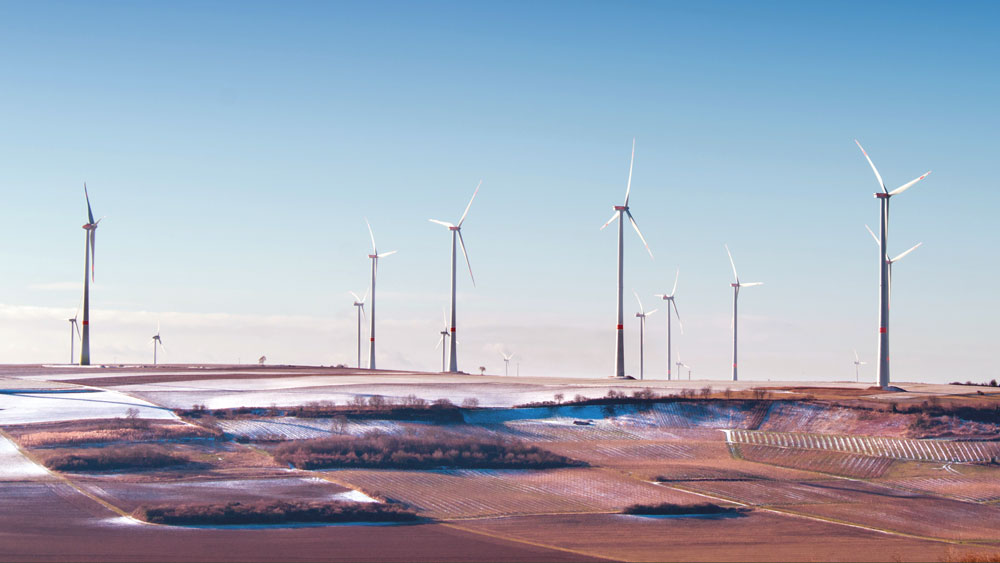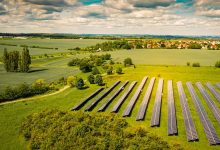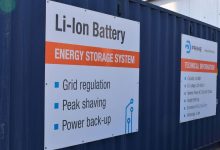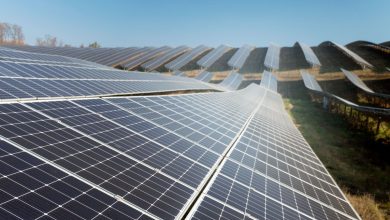Renewables boom
1.23 trillion dollars investments by 2022
Globally, the capacity of one TW installed in wind and solar energy sources was exceeded in mid-2018, according to international statistics. Investments in this area will continue at a sustained pace over the next few years, so that by mid-2023 the second TW of wind and solar energy will be achieved. With the increase in installed capacity, the costs will continue to decrease, so that at the second TW they will be 46% lower than at the first TW. In total, installed capacity in wind farms accounts for 54% and solar energy – 46%.
The renewable energy sector has developed extremely rapidly since 2000, with statistics showing that installed capacity in the wind and solar parks has increased 65 times compared to this benchmark. As investment, it is estimated that the first TW of wind and solar energy required approximately 2.3 trillion dollars. Given the forecast according to which to install the second TW costs will drop by around 46%, calculations show that investments will amount to a total of 1.23 trillion dollars between 2018 and 2022. The wind energy boom has resulted in the creation of new jobs. This quick growth meant over 300,000 jobs and the generation of an annual turnover of EUR 72 billion in 2017, according to windeurope.org. The European industry holds a share of 40% of all wind turbines sold globally, and wind energy is a reliable and affordable energy source, with benefits for the European electricity consumers, bringing an important contribution to energy security. According to the same sources, wind energy already meets 11% of EU’s energy demand.
Renewable energy to ensure 30% of the demand
The percentage of renewable energy used globally would increase by one fifth in the next five years, to 12.4% in 2023, according to a report by the International Energy Agency (IEA). In the electricity sector, renewable energy (hydro, photovoltaic, wind, bioenergy and tides) will deliver the fastest growth rate, supplying almost 30% of the energy demand in 2023, from 24% in 2017. During this period, renewables are forecast to meet more than 70% of global electricity generation growth, led by solar PV and followed by wind, hydropower, and bioenergy, IEA report shows. Hydropower remains the largest renewable source, meeting 16% of global electricity demand by 2023. It is followed by wind (6%), solar PV (4%), and bioenergy (3%), the International Energy Agency estimates. According to the IEA, 2017 was a record year for renewable energy, the capacity of photovoltaic power plants recording the highest increase, to 97 Gigawatts. More than half of this capacity was installed in China, country which invested USD 44 billion in clean energy projects in 2017.
Over the next six years, the increase in renewable energy production will be dominated by photovoltaic technology, with new capacities of 600 Gigawatts becoming operational, according to the IEA report.
China continues to invest heavily
China continues to be a force in the field of renewable energy. According to a report published by the Institute for Energy Economics and Financial Analysis (IEEFA), China’s increased renewable energy capacities are part of the country’s effort to become a world leader in the sector. The report states that China’s total investment in clean energy projects in 2017 amounted to USD 44 billion, a significant increase compared to 2016, when the investment was USD 32 billion.
2,179 GW installed at the end of 2017
Global renewable energy production capacities increased by 167 GW, reaching 2,179 GW by the end of 2017. This represents an annual average increase of 8.3% for the seventh consecutive year, according to a study published in the spring of 2018 by the International Renewable Energy Agency (IRENA). In 2017, capacities installed in solar PV climbed 32% and in wind power by 10%, says the report on renewable energy, covering over 200 countries and territories. The increase in the renewable energy production capacity comes amid substantial cost reductions. During 2010-2017, the cost of electricity form solar PV fell by 73% and from wind energy by almost 25%. In 2017, 64% of the new installed capacities were in Asia, while Europe and North America added 24 GW and 16GW respectively in new installed capacities. The latest data confirm that global energy transition continues at a rapid pace, due to substantial cost reductions, improved technology and favourable environmental policies, IRENA claims.
Millions of new jobs
According to figures published by IRENA, over 10 million persons work in the renewable energy industry. In 2017 alone, the sector added over 500,000 jobs at global level, increasing by 5.3% compared with 2016, the largest employer being solar photovoltaic. The photovoltaic energy industry has remained the largest employer among all renewable technologies, providing 3.4 million jobs, increasing by almost 9% since 2016, after a record of 94 GW installed in 2017. Geographically, 65% of all photovoltaic solar jobs are located in China, equivalent to 2.2 million people, representing an increase by 13% over the previous year. Despite a slight decline, Japan and the US ranked second and third among the largest photovoltaic solar energy markets, followed by India and Bangladesh. At present, the top five represent about 90% of global solar photovoltaic jobs.
In general, China, Brazil, the US, India, Germany and Japan remain the largest employers in the world in the renewable energy sector, accounting for over 70% of total jobs in the industry at global level. While the number of countries benefiting from the socio-economic benefits of renewable energy is increasing, there are few countries where production activities take place. Thus, 60% of all renewable energy jobs are in Asia, according to the study. The data also underscores an increasingly regionalized picture. In countries where attractive policies exist, the economic, social and environmental benefits of renewable energy are most evident,” said Adnan Z. Amin, Director-General of IRENA. “Fundamentally, this data supports our analysis that decarbonization of the global energy system can grow the global economy and create up to 28 million jobs in the sector by 2050.”
Europe added 11.5 GW
Expenditure on new wind power generation capacities in Europe fell by one-fifth in 2017, to the lowest level in the last three years, according to the WindEurope association, a sign that the sector cuts costs and becomes more efficient as governments cut subsidies.
According to the annual report of the organization’s experts, investment in new onshore and offshore wind projects in the EU declined in 2017 by 19%, to EUR 22.3 billion, from the record of EUR 27.5 billion in 2016. However, lower investments made in 2017 have funded the construction of new record capacities of 11.5 Gigawatts (GW), up from 10.3 GW in 2016, which means that in 2017 the cost went down to EUR 1.9 billion for each GW of new capacities, from EUR 2.7 billion per GW in 2016. “Cutting costs along the value chain of industry and increasing competition inside the industry have made it possible for investors to finance more capacity for less money,” WindEurope highlights. Among European countries, Germany was the largest investor in wind power in 2017, accounting for 30% of total investment, followed by the UK with 22%. Also, investments in new onshore wind projects have reached a historic record of EUR 14.8 billion. Currently, the EU has a total installed capacity in wind power of 169 GW, which is outpaced only by natural gas capacities. Wind power is responsible for 18% of the total installed capacity in the EU.
The capacity of offshore wind turbines is increasing
The capacity of wind turbines installed offshore in Europe has increased by 25% in 2017, the WindEurope report mentions. 13 new offshore wind parks with a total capacity of 3.1 GW were completed in 2017, taking total capacity of offshore wind parks in Europe to 15.8 GW.
Giles Dickson, WindEurope CEO, qualifies the increase by 25% as ‘spectacular’, adding that offshore wind is now a mainstream part of the power system. Giles Dickson explained the reasons underlying this growth. “The costs have fallen rapidly. Investing in offshore wind today costs no more than in conventional power generation.”
According to WindEurope, currently there are 4,419 offshore wind turbines in 11 countries in Europe, with a capacity of 15.78 GW. In 2017, the most offshore wind energy capacities were completed in the UK (1.7 GW) and Germany (1.3 GW). WindEurope shows that, in Europe, the offshore wind energy is heavily concentrated in the UK, Germany, Denmark, the Netherlands and Belgium, which hold 98% of total offshore turbines.
WindEurope mentions that at the end of 2017 11 offshore wind parks were under construction, and once completed they will increase the installed capacity by 2.9 GW. Thus, in 2020 the total capacity of offshore wind parks in Europe will reach approximately 25 GW.
Romania is swimming against the tide
In Romania, the development of the sector is blocked after the change of legislation regarding subsidies for renewable energy a few years back. The new energy strategy does not seem to help either, according to representatives of the sector. The Romanian Wind Energy Association (RWEA) claims that the Energy strategy proposed by the Ministry of Energy ignores the current technical, economic and climate trends and proposes measures in contradiction with the declared objectives, to the detriment of consumers. RWEA believes the strategy is “a collection of morally outdated development plans of state-owned companies, old plans with questionable potential to be implemented, overlooking wind energy.”
The association has warned that wind energy has complied with the targets of the last strategy adopted in Romania, installing the capacity provided and bringing technological progress. Moreover, this technology has improved its technical performance despite a regulatory framework created for conventional technologies and has reduced costs despite losses incurred due to repeated changes to the support scheme, losses which exceeded 25% of the invested capital. RWEA believes that wind energy has become the cheapest form of power generation, with an average installation cost in Romania of approximately EUR 1,080/kW and a Levelized Cost of Energy (LCOE) of approximately EUR 52/MWh for the analysis period of the strategy.
A RWEA study prepared with the support of Deloitte, whose data was sent to the Ministry of Energy in the position paper regarding the Energy strategy, shows the technical and economic opportunity for additional capacities from wind sources of at least 3,000 MW in the horizon of the strategy, which will create an added value of over EUR 5 billion between 2021 and 2030, while the impact of investments related to the development of renewable energy sources will reach EUR 350 billion over the period under review. The Association points out that the technologies provided by the ministry for investments (nuclear energy, coal-fired energy and pumped storage power plants) are the most expensive forms of energy generation, with the longest durations of implementation and will require consumer support throughout their lives.







